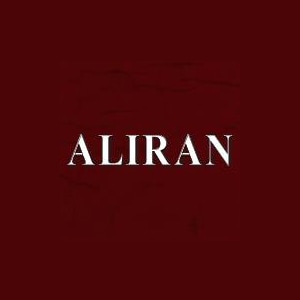The Sore Thumb of Penang
1 天前
Along the curve of Tanjung Bungah, where the sea once met the land in quiet rhythm, lies a small piece of coast formed by the illegal dumping of earth and construction debris.
Locals came to call it the Sore Thumb, a rocky finger of land reaching into the water, forged by calculated disposal but slowly reclaimed by nature.
Over two decades, trees, animals and birds turned this forgotten ground into a small sanctuary. Now that same sanctuary stands on the edge of being erased.
This is a story about what is quietly vanishing from Penang’s coastline and what that means for the people who live beside it.
Living edge between land and seaEvery coastal strip is a frontier of life, part forest, part sea, part sky.
The Sore Thumb remains one of the last places on northern Penang Island where this fragile balance still survives. Mangrove saplings share space with wild grasses. Monitor lizards and otters move along the shore, while sea eagles circle above the remaining trees.
For nearby residents, the area is more than scenery. It is a living classroom, a sanctuary, a rare breath of wildness by the sea.
Yet the chainsaws have already come. By October 2025, many of the mature trees were cut down. What remains is a silence heavier than the machinery itself, a living place, wounded but not yet lost.
Why the coast mattersPenang’s coasts have always shaped its identity – from fishermen’s stories to family picnics, from quiet morning walks to storm season resilience. Natural beaches and coastal green spaces are not luxuries. They are protective systems.
Vegetation holds the soil. Slopes absorb wave energy. Tidal zones filter runoff and feed the marine food web.
When we trade this living edge for concrete, we lose more than a view. We lose a shield. Once a natural shoreline is levelled or filled, its ecological rhythm is almost impossible to restore.
Wildlife protected by law, ignored in practiceThe Sore Thumb is not just a patch of green. It is home to species that are legally protected under Malaysia’s Wildlife Conservation Act 2010.
White-bellied sea eagles and Brahminy kites, both large coastal birds, have long nested in the tall trees along this shore. Disturbing their nests or felling nest trees without written permission is an offence under the law.
Otters are totally protected and listed as vulnerable on the IUCN Red List, the global database that assesses species’ risk of extinction. Any alteration of the shoreline, drainage outlets or access to the sea risks destroying their dens and foraging routes.
In the canopy, dusky leaf monkeys, gentle and shy, feed on young leaves. They too are totally protected, and tree-felling in occupied areas carries serious implications for their survival.
Even the water monitors, common yet vital scavengers, are legally protected and listed under CITES Appendix II, which regulates international trade to ensure it does not harm wild populations.
Together, these animals form a delicate chain of life that defines this coast. To clear their habitat without ecological assessment is not only a moral loss but undermines the protections that exist to safeguard Penang’s remaining biodiversity.
A community cut offFor years, the people of Tanjung Bungah have asked for a natural park, not a manicured garden but a simple green lung where one can walk under shade, watch birds or dip into the sea without gates or tickets.
That hope now stands fenced off, replaced by the hum of construction. From balconies and pathways, residents watch their beloved beach stripped bare. The sound of waves now mingles with the grind of chainsaws.
The loss is not only ecological but deeply emotional – a shared grief for something open and free, now slipping away.
Where policy meets realityThis transformation sits uneasily beside the aspirations of Penang 2030 to build a family-focused, green and resilient state that is inclusive.
It also contradicts the Penang Green Agenda 2030, which commits to protecting ecosystems and biodiversity as the foundation of a sustainable low-carbon state.
Yet on the ground, the protection promised in policy often falters in practice. The shoreline meant to be shared becomes segmented and walled off. Natural resilience gives way to engineered permanence. The coast grows narrower, harder and less alive.
Another way is possibleIt doesn’t have to be this way.
Across the region, there are examples of sensitive coastal design that invite people into nature without erasing it.
At Pasir Ris Park and Changi Point in Singapore, elevated wooden boardwalks weave through mangroves. At Kuala Selangor Nature Park, visitors move above the swamp forest on gentle walkways.
These designs respect the rhythm of the tides, allowing vegetation and wildlife to recover while keeping people connected to the coast.
The Sore Thumb could have been, and still could be, a place like that – a small model of nature-based coastal restoration where learning, leisure and conservation coexist. With modest interventions such as wooden paths, viewing decks and steps down to the beach, this little headland could stay wild yet welcoming.
The value of what remainsIf Penang loses this small green peninsula, it will not be the first or last piece of coast to disappear.
But each loss tightens the horizon a little more. Beaches once open to all become private backyards or fenced zones of progress.
We risk raising a generation for whom the seaside is no longer a public right but a privilege glimpsed between walls.
And yet hope remains in residents who still plant trees, clean beaches, document wildlife and speak up for transparency. They understand that the coast is more than real estate. It is a shared inheritance of salt air, roots and light.
A call to rememberPenang’s coastline is part of its soul. To walk by the sea is not a small joy but the essence of island life.
The Sore Thumb is more than a patch of land. It is a mirror held up to the choices we make.
We can continue to harden our shores until the waves crash against concrete. Or we can choose humility and work with nature rather than against it. .
If we choose the latter, Penang can still live up to its promise – not just a green slogan but a living island where progress has roots and the horizon still belongs to everyone.
Lisa C is a concerned resident of Tanjung Bungah
...Read the fullstory
It's better on the More. News app
✅ It’s fast
✅ It’s easy to use
✅ It’s free









